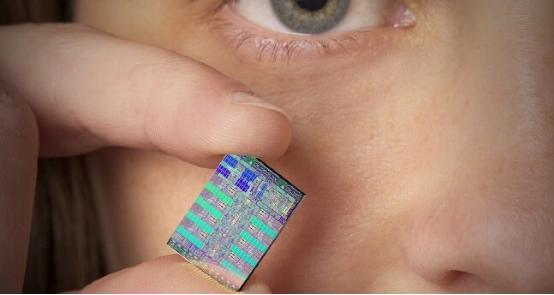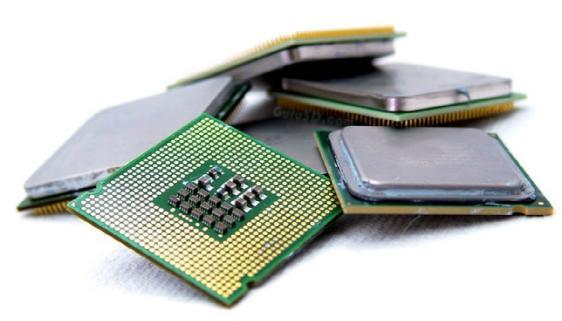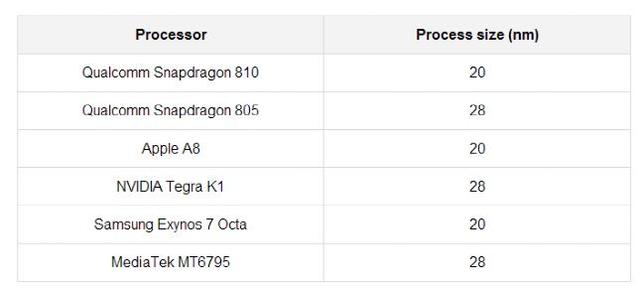Whenever a new processor is released, manufacturers have to stand up and emphasize that their devices are equipped with smaller nanometer process chips, so their latest devices are more powerful and energy efficient than the previous generation.
This article refers to the address: http://
However, this statement is somewhat “anti-intuitiveâ€: the processors are really smaller, but they are getting stronger, can energy consumption be reduced? We may be accustomed to think that larger size means stronger and stronger. Naturally, more energy is needed. Is this idea accurate? You may not know exactly what different nanotechnology means, and how they affect your smartphone's gaming or battery life.

In order to clarify these issues, first let us explain the processor process technology concept.
What is nano? In essence, a microprocessor consists of several layers of different materials. Stacking them together in a special way creates electronic components such as transistors, resistors and capacitors. These are all difficult for us to see with the naked eye, they can only be observed under the microscope. These miniature electronic components lie in a square grid to act as open and close buttons. The distance between electronic components is calculated using nanometers. We all know that one nanometer is equal to one billionth of a meter. The smaller the distance between the electronic components, the more we put in the chip.

There are many ways to reduce the distance of electronic components to obtain more efficient chips. Reducing the distance between the microprocessor electronics will result in lower current capacitance at different transistor terminals, which will increase their switching frequency. When each transistor switches electronic signals, the dynamic power consumption consumed is directly related to the current capacity, so that the transistor becomes fast and consumes less power.
Yes, this will definitely get better. These small transistors require low voltage to turn on, so they also require low voltage to drive. Dynamic power loss is proportional to the square of the voltage. When you lower the voltage needed to drive the current through the transistor, you end up reducing power consumption.
Last but not least, another factor that semiconductor manufacturers prefer for smaller process size processors is cost. The smaller the electronic components, the more components you place on the wafer. However, while smaller process sizes require more expensive equipment, these investment costs are offset by the cost per wafer.

Why does it take an average of two years to shrink the processor process size? This naturally includes a balance of everything. This is also the reason why the small, powerful, and effective transistors mentioned above are prone to leakage current. Occasionally, the voltage leaks in the square, which causes power consumption even if the chip does nothing. In an ideal state, all components in the compartment grid remain stable, but if the electronics are too small, the current will become more unstable.
What is the limit size of electronic components? The current popular and powerful mobile processors are between 20 nanometers and 28 nanometers, but the minimum processor process size under development is 14 nanometers. Built by Intel, it is used in desktop and notebook CPUs. The company's goal is to develop a 5 nanometer process processor by 2020. Industry professionals expect a 1nm process processor to appear in 2028.
To some extent, this will break the limitations of the processor production technology we are currently using, and industry participants will have to consider using other development paths and materials. Given that we have developed a transistor with only a single atom size in 2012, we can boldly say that chip makers will certainly be able to find ways to continue to develop better products in the future.
Right Angle D-sub Connector IP66 IP67 Rated
IP66 / IP67 waterproof d-sub connectors-Designed for IP Performance
ANTENK has developed IP66 / IP67 waterproof d-sub connectors that utilize a proprietary sealing technology, which maintains the same physical size and footprint as standard d-sub products.
Antenk's line of Waterproof d-sub connectors utilize an innovative sealing technology eliminating the need to redesign enclosures and PC boards when implementing IP67 design upgrades.These connectors are designed for applications that require protection from heavy spray or are exposed to short-term submersion. Connectors are available in vertical and right angle board mount types as well as solder cup for panel mount cable applications. Standard D-Subs are available in 9 pin, 15 pin, and 25 pin positions, and high density D-Subs are available in 15 pin, 26 pin, and 44 pin positions
Applications of Antenk waterproof d-sub connectors:
Hand held computers, scanners, and printers that are used outdoors
Remote sensors, gauges, and data loggers that are used outdoors
Industrial and Medical equipment that is routinely subject to wash down
Transmitters and emergency beacons that are subject to temporary submersion
Gas, Electric, and Water metering systems that have embedded Smart Grid electronics
Portable electric generation equipment (Gen Sets)
Consumer and Commercial boating electronics (Radios, Scanners, Radar, DC Power Ports)
IP67 D-SUB | WATERPROOF CONNECTORS FEATURES & BENEFITS
Signal / Low Power in 6 standard size
(Standard: 9 pin, 15 pin, 25 pin; High Density: 15 pin, 26 pin,44 pin)
Combo-D / High Power in a variety of configurations:
(3W3, 5W5, 7W2, 9W4, 11W1, 13W3, 13W6, 17W2, 21W1, 21WA4)
Solder Cup, Vertical Mount & Right Angle Board Mount Options
High Reliability Screw Machined Contacts
3 amp / 5 amp / 20 amp / 40 amp Power Options
-65°C to +105°C Operating Temperature Range
Right Angle D-SUB Connector IP66 IP67 Rated available in
3 industry sizes/positions:Standard Density (9 pin, 15 pin, 25 pin).
Male & Female Versions
Right Angle D-sub Connector IP66 IP67 Materials
Shell: Steel with Nickel Plating.
Insulator: Glass-filled thermoplastic. U.L. rated 94V-O
(260° process temp for board applications)
Machined Contacts:
Male Pins - Brass
Plating: Gold Flash on entire contact.
IP67 Right Angle D-Sub Seal: Proprietary Information
Right Angle D-Sub IP67 Rated,Right Angle D-Sub Waterproof,Standard Density Waterproof Right Angle D-Sub Connector, High Density Waterproof Right Angle D-Sub Connector
ShenZhen Antenk Electronics Co,Ltd , https://www.pcbsocket.com